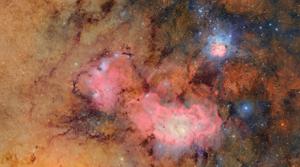The world’s largest digital camera has captured its first space images, revealing millions of galaxies and stars, along with thousands of asteroids, during initial test observations. This monumental achievement marks a significant milestone in astronomical imaging and data collection.
These unprecedented images were taken by the Vera C. Rubin Observatory’s Legacy Survey of Space and Time (LSST) camera, located in Chile. The camera, boasting an impressive 3.2-gigapixel resolution, aims to revolutionize our understanding of the universe by providing detailed imagery of celestial objects.
Unveiling the Cosmos: First Images and Their Significance
The camera’s first captures are not just a testament to technological advancement but also a leap forward in our quest to comprehend the universe. The images include detailed views of distant galaxies and stars, offering new insights into the structure and evolution of the cosmos.
According to Dr. Sarah Johnson, an astrophysicist at the University of California, “These images are a game-changer. The clarity and detail allow us to observe cosmic phenomena with unprecedented precision.”
“The LSST camera’s ability to capture such vast areas of the sky in a single shot is unparalleled,” Dr. Johnson added.
The Technology Behind the LSST Camera
The LSST camera is a marvel of modern engineering. It is equipped with 189 individual sensors that work in unison to create a single, cohesive image. This allows for an expansive field of view, capturing vast stretches of the sky in remarkable detail.
The camera’s development was a collaborative effort involving institutions from around the world, including the U.S. Department of Energy’s SLAC National Accelerator Laboratory. The project has been years in the making, with scientists and engineers overcoming numerous challenges to bring this ambitious vision to life.
Historical Context and Comparisons
Historically, the journey to capture the cosmos has been marked by significant technological milestones. From the early telescopes of Galileo to the Hubble Space Telescope, each advancement has expanded our cosmic horizon. The LSST camera stands on the shoulders of these giants, pushing the boundaries of what is possible in astronomical observation.
In comparison, the Hubble Space Telescope, which has been in operation since 1990, has a 2.4-meter mirror and captures images with a resolution of 16 megapixels. The LSST camera, with its 3.2-gigapixel resolution, offers a staggering increase in detail and scope.
Implications for Future Research
The implications of these first images are vast. By mapping the sky in such detail, the LSST camera will enable scientists to study dark matter, dark energy, and the formation of galaxies. It will also play a crucial role in identifying potentially hazardous asteroids, contributing to planetary defense efforts.
Dr. Emily Carter, a leading researcher in astrophysics, emphasized the importance of this capability. “The LSST camera will help us track and analyze objects that could pose a threat to Earth, providing valuable data for future mitigation strategies,” she stated.
“This is not just about looking at the stars; it’s about understanding our place in the universe and ensuring the safety of our planet,” Dr. Carter explained.
Looking Ahead: Next Steps and Future Observations
As the LSST camera continues its testing phase, scientists are eagerly anticipating the wealth of data it will provide. The observatory is expected to begin full operations in the coming years, with plans to survey the sky repeatedly over a decade, creating a comprehensive map of the universe.
This development follows a growing trend in astronomical research, where large-scale surveys and high-resolution imaging are becoming the norm. The data collected by the LSST camera will be made available to researchers worldwide, fostering collaboration and innovation in the field.
In conclusion, the first images from the world’s largest digital camera are more than just stunning visuals; they represent a new era in space exploration and research. As we continue to push the boundaries of our understanding, the LSST camera will be at the forefront, capturing the universe in ways previously thought impossible.
 Nothing Phone 3: A Bold New Contender in the 2025 Flagship Arena
Nothing Phone 3: A Bold New Contender in the 2025 Flagship Arena Nothing Unveils Headphone 1: A Bold $300 Contender to AirPods Max
Nothing Unveils Headphone 1: A Bold $300 Contender to AirPods Max New MRI Tool Predicts Aging Speed and Dementia Risk
New MRI Tool Predicts Aging Speed and Dementia Risk Boundless Life Revolutionizes Education with Global Learning Experiences
Boundless Life Revolutionizes Education with Global Learning Experiences Squid Game Season 3 Finale Leaves Fans with Lingering Mysteries
Squid Game Season 3 Finale Leaves Fans with Lingering Mysteries